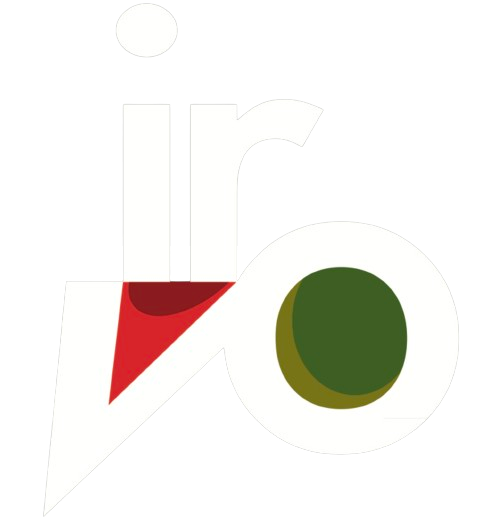27 August 2012
2012 harvest, unjustified alarmism
It is unjustified alarmism. It will be a good harvest, perhaps a little weak, as happens physiologically in the driest years, but it is not the disaster announced by some areas of Italian viticulture and relaunched in recent days by the media. These liquidating and somewhat hasty attitudes have raised many doubts, especially among producers in the South, worried that an incorrect and untruthful message could be conveyed about the current harvest.
In Campania Lucio Mastroberardino, President of the Italian Wine Group and historic producer of the region, underlines the fact that "fortunately Italy is long: Naples is 500 kilometers from Bologna but also from Reggio Calabria. It is a generalization that clashes with the current state of the vineyards and the harvest started regularly with a little advance; in short, we do not deviate from what normally happens in our latitudes. We are used to dealing with this state of affairs." Antonio Rallo, President of the DOC Sicilia and owner of Donnafugata, makes himself heard from Sicily, calling on everyone to use common sense and inviting them to verify directly in the field what is happening: "in Sicily the harvest has already started two weeks ago, with white grapes and the earliest varieties. Nothing unusual to note, we brought the harvest forward by a few days and we have a small reduction in quantities compared to last year. For red grapes it is still early to give a reliable quality forecast, but everything is proceeding normally: the vineyards are doing well and, only where necessary, the producers have avoided the risks of water stress with irrigation. And then - underlines Antonio Rallo - the yields per hectare in Sicily are among the lowest in Italy, with fewer bunches on the plants and more vegetative-productive balance, even for the hottest years. The aromatic and phenolic maturation of the grapes is substantially in line with the quality standards expected from our cellars. It will be a naturally "sunny" harvest but there is nothing that can justify a negative opinion on the 2012 harvest. They are exaggerations that mirror those we are used to hearing every year, even when unlikely harvests of the century are announced". Vito Varvaro, President of Cantine Settesoli, the most important cooperative company in the South, which sells millions of bottles worldwide under the Settesoli and Mandrarossa brands, confirms that, in Sicily, the harvest is taking place with absolute regularity, and in the name of quality . “Come to Menfi, come and visit the vineyards and watch the grape harvest. You will discover a traditional wine-growing area that is among the most organized and manned in the country. A network of over 1600 winemakers, small owners with an average extension of around three hectares, accustomed to taking care of the vineyard with dedication and extreme attention, especially in the pre-harvest phases. The community of winemakers of Settesoli, thanks to the irrigation system used and the cultural techniques adopted, ensures that the quality of the grapes produced is always consistent with the oenological value expressed by our territory. The 2012 harvest will not deviate at all from those quality parameters and will certainly give rise to wines capable of winning the challenges on the markets." To those who call into question the "disastrous" effects of climate changes, Dario Cartabellotta, director of the Agriculture Department and of IRVOS, the regional institute of wines and oils of Sicily, responds - again from Sicily - recalling the "structural" data ” if not even “characteristic” of the Sicilian wine-growing environment and the recurrence of drought years. “If you talk to the producers of the Nisseno area, the Agrigento countryside and the province of Ragusa, you will understand that they have always "coexisted" with these climatic aspects, at least in the most extreme areas. The clonal selections carried out in recent years on our traditional vines and the rationalization of the Sicilian vineyard have greatly attenuated the effects of the dry season". Director Cartabellotta is also keen to underline that: “the viticultural habitats of Sicily and its smaller islands differ greatly from area to area and the harvest in the region lasts until late October with that on Etna. It is truly pernicious to limit ourselves to observing what happens beyond the Gothic line to present it erga omnes as a general fact. Let's face it, the processes that drive quality will increasingly lead to less production." In Puglia there is an estimated drop in production in 20% compared to last year, but the data is still partial and not homogeneous. Luigi Rubino, President of the Puglia Best Wine Consortium and producer in the Brindisi area, is clear in "rejecting" these hasty judgments: "we are harvesting the white grapes according to the pre-established calendar. There were early ripening in the more internal vineyards, but in the rest of the Salento peninsula, in the areas closest to the sea, we were regular. The grapes are healthy, the bunches a little smaller but of excellent quality. The low yields per plant helped us mitigate heat peaks which, however, were managed normally according to the usual procedures. We still have to wait for the reds but everything points to an excellent level of quality – continues Rubino – which we hope to be able to preserve until the grapes are harvested. The Italy of quality wine has a significant point of reference in Salento. The South, and Puglia in particular, is today an important part of this valuable productive fabric". In Sardinia, in the chosen wine-growing territories of a region which is small in terms of the number of bottles produced but with constant growth in quality, the climatic trend was almost similar to the last two vintages, with regular rainfall and temperatures which in the months of June and July they were able to enjoy the Mistral, with a mitigation of the heat and excellent temperature variations between day and night. “These conditions – explains Giulio Corti of the Mesa company, an important brand from the Sulcis area of Cagliari – have allowed the vineyard to breathe and to define a truly important health profile of the grapes. We will start the harvest next weekend and no later than the beginning of the next one, observation of the vineyards confirms a more than interesting forecast and we are certain that it will be an absolutely enviable harvest, especially for some varieties such as Vermentino and Carigliano . It is a regular harvest also in terms of quantity which, here, is obviously oriented towards low yields per plant. No, I don't see disasters on the horizon."
Ultime notizie
News 9 January 2025
Public Consultation Update PTPCT IRVO 2025-2027
Public consultation for the purpose of updating the Three-Year Plan for the Prevention of Corruption and Transparency (PTPCT) 2025/2027 In order to allow maximum involvement in the preparation of the update of the Three-Year Plan for the Prevention of Corruption and Transparency of the Regional Institute of Wine and Oil for the three-year period 2025/2027, all those who are interested are invited - in particular citizens, companies, consumer associations, representative trade unions, other entities operating in the territory representing particular interests - to send observations and/or proposals to the Person in Charge of the Prevention of Corruption and Transparency (RPCT), which will be evaluated when drafting the document.


